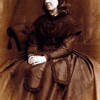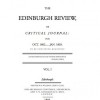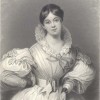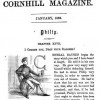
Janice Schroeder, “On the English Woman’s Journal, 1858-64″
The English Woman’s Journal (EWJ), published between 1858 and 1864, was the first monthly magazine to be published by an organized feminist network in England. From month to month, the EWJ featured a mix of articles on women’s employment, education, and volunteering, notable women in history, poetry, reviews, current events, and a readers’ column. Staffed by women with primarily female contributors, the magazine embodied the principles and opportunities for women it promoted. That is, in a rapidly changing industrial landscape, women needed new and better avenues of remunerative, meaningful employment, and the education and training required to succeed in the workforce. Marriage and motherhood—the domestic ideal—was not a guarantee of women’s economic or emotional well-being. Working with a meager budget, the circle of feminist activists—the Langham Place Group—who owned and ran the EWJ, saw their magazine as a space to promote and publicize the work they and other women were already doing. They experienced both the thrill and the shock of seeing their magazine, and themselves, noticed in the mainstream, male-dominated press. By 1862 the magazine had run into serious financial straits and many of the members of the network had either moved on to new projects or retired from public work. While maintaining a small subscription base throughout its six-year run, the appearance of the English Woman’s Journal in mid nineteenth-century England nevertheless signaled a new departure in feminist writing, women’s journalism, and attitudes towards women’s employment.

Ina Ferris, “The Debut of The Edinburgh Review, 1802″
The publication of The Edinburgh Review in October 1802 was to alter the landscape and status of periodical publications for the nineteenth century. In its entry into the lowly sphere of review writing, the new journal instituted key innovations that transformed the literary review into a powerful cultural forum within an expanding print culture.

Angela Esterhammer, “1824: Improvisation, Speculation, and Identity-Construction”
Literature and cultural history of the year 1824 reflect the prominence of improvisation and speculation as ideologies and modes of action. Both these terms suggest hasty action that lacks a solid or profound basis, that responds to contingencies and constructs its own (pseudo-)reality. This article explores modalities of improvisation and speculation by focusing on the interrelated themes of ephemerality, appearance, and identity-construction in texts and performances of the year 1824, including influential works of poetry and fiction, the burgeoning periodical press, and new forms of theatrical entertainment.

Linda K. Hughes, “On New Monthly Magazines, 1859-60”
In November 1859 and January 1860, two new shilling monthly magazines, Macmillan’s Magazine and Cornhill Magazine, entered Victorian markets. Long considered a landmark of Victorian literature and culture in twentieth-century publishing histories, this dual debut is both a historical event and a useful lens for reconsidering methods of print culture studies today.
